Introduction to SaaS Sales

Sales SaaS, or Software as a Service sales, signifies a transformative approach in the software industry, focusing primarily on recurring revenue through subscription models rather than traditional one-time purchases.
This model facilitates continuous customer engagement and service delivery, reshaping how software solutions are monetized and maintained.
What Does Sales SaaS Mean?

Sales SaaS refers to the process of selling cloud-based software on a subscription basis.
In contrast to traditional software sales, SaaS sales emphasize consistent revenue streams via regular subscription fees.
This allows customers to access software hosted remotely, eliminating the need for significant internal infrastructure or hefty initial capital expenditures.
SaaS sales require an intricate understanding of both the product offered and the evolving needs of customers. This relationship-driven model ensures the success of the SaaS approach and promotes ongoing innovation within the industry.
Companies that adapt to and embrace these dynamics are well-positioned to thrive in the ever-evolving digital landscape, continuously meeting and exceeding the technological demands of their markets.
How Sales SaaS Can be Beneficial?
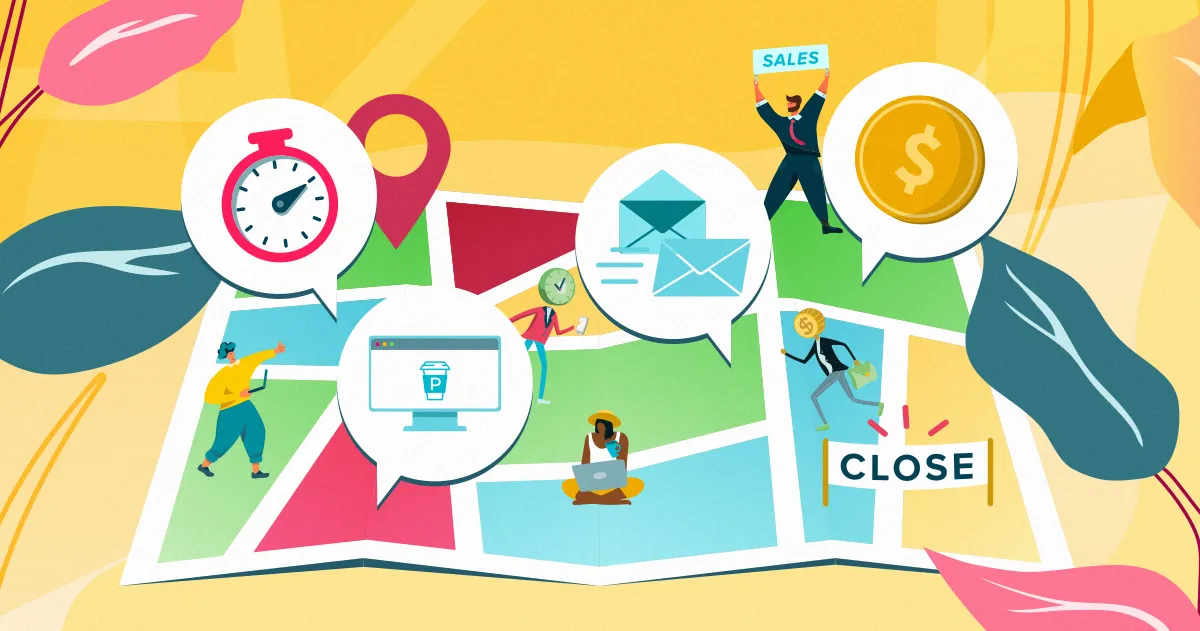
Sales SaaS, or Software as a Service sales, has redefined the business software landscape, offering substantial advantages over traditional software sales models.
This approach is not just about providing software solutions; it’s about delivering continuous value through a service-oriented model.
A key component of this is the SaaS sales model, which includes various strategies like transactional, customer self-service, and enterprise sales models to optimize customer lifetime value and acquisition costs.
Stability and Predictability
With sales SaaS, companies enjoy a consistent revenue stream through monthly or annual subscriptions.
This recurring revenue model provides financial stability and predictability, which is vital for long-term planning and investment.
- Why it matters: Regular income helps businesses manage cash flow more effectively, reducing the financial volatility associated with one-time sales.
- SaaS businesses with recurring revenue models have been shown to achieve a 15% higher valuation than those on traditional revenue models.
Flexibility for Growth
Sales SaaS models inherently offer scalability to both providers and users.
Companies can scale their services up or down based on customer demand without significant upfront investments.
- Why it matters: This flexibility allows SaaS companies to efficiently manage resource allocation, adapting quickly to changes in customer needs and market conditions.
- 73% of organizations indicate that nearly all their apps will be SaaS by 2022, demonstrating the scalability of the SaaS model.
Reduced Capital Expenditure
Adopting SaaS solutions allows businesses to reduce upfront capital costs.
There is no need to purchase hardware or pay for software licenses outright, as SaaS operates on a subscription basis.
- Why it matters: Lower entry costs make advanced software solutions accessible to smaller businesses, leveling the playing field.
- Companies can cut initial IT expenditures by 15-25% by opting for SaaS solutions over traditional software.
Market Accessibility
SaaS enables software providers to reach a global market more easily.
Being cloud-based, it allows users from any location with internet access to utilize the service.
- Why it matters: Increased market accessibility helps SaaS providers quickly expand their user base and enter new markets.
- Businesses leveraging cloud-based SaaS solutions see, on average, a 19.63% growth in company productivity.
Continuous Updates
Unlike traditional software that may require manual updates or purchases of new versions, Sales SaaS' web based software provides continuous updates automatically without additional cost.
- Why it matters: This ensures that all users have access to the latest features and security enhancements, which improves both functionality and user experience.
- Companies using SaaS applications can reduce the time spent on patching and maintenance by up to 20%, significantly decreasing downtime and increasing productivity.
Cross-Device Compatibility
Sales SaaS platforms are designed to be used across different devices, including smartphones, tablets, and desktops, ensuring access anytime, anywhere.
- Why it matters: This flexibility allows employees to work from any location, enhancing collaboration and efficiency.
- Studies show that businesses that adopt mobile-friendly SaaS solutions see an improvement in employee productivity by approximately 15%.
Customer Retention
SaaS companies often provide robust customer support and service as part of the subscription based pricing model, aiming to enhance customer satisfaction and retention.
- Why it matters: High-quality support helps resolve issues quickly, which can increase customer loyalty and reduce churn.
- Effective customer service can improve retention rates by 10-15% in SaaS businesses.
Data Security
Sales SaaS providers implement strict security protocols to protect data, utilizing advanced encryption methods, secure data centers, and regular security audits.
- Why it matters: These measures ensure that customer data is secure from unauthorized access and breaches.
- With 94% of businesses expressing increased confidence in cloud security, SaaS solutions are recognized for their superior security features compared to on-premises solutions.
Customization and Integration
Sales SaaS platforms offer extensive customization options, allowing businesses to tailor features to their specific operational needs.
- Why it matters: Customization ensures that businesses can align the software closely with their processes, enhancing efficiency and user satisfaction.
- SaaS providers often use APIs that enable seamless integration with existing tools and systems, minimizing disruption and facilitating a smoother workflow.
Predictable Costs
With Sales SaaS, costs are predictable, typically encompassing a fixed monthly or annual subscription fee that includes maintenance, support, and upgrades.
- Why it matters: This predictability aids in budgeting and financial planning, eliminating the surprise costs associated with traditional software upgrades and maintenance.
- Companies can reduce their software expenses by up to 15% by switching to a SaaS model due to lower upfront costs and reduced IT staffing needs.
Steps To Develop SaaS Sales Process

The SaaS sales process is a critical component in driving the sales cycle significantly to the growth and sustainability of a cloud-based software business.
Each step in the process should be optimized to ensure efficiency and high conversion rates.
Here’s how you can structure a successful SaaS sales process using strategic steps and incorporating essential SaaS concepts like monthly recurring revenue, customer acquisition cost, and churn rate.
Target Market Identification
Identifying your target market is the first and most crucial step in the SaaS sales process.
- Research and Segment Your Audience: Understand who benefits most from your product.
- Focusing on the right audience enhances the effectiveness of your marketing efforts and improves conversion rates.
- How it works: Use market research to determine the industries, company sizes, and roles that most need your solution, thereby lowering your customer acquisition cost.
Lead Generation
Generating high-quality sales qualified leads is fundamental in building a robust sales pipeline.
- Employ Multi-Channel Strategies: Utilize SEO, content marketing, paid ads, and social media to generate leads.
- Multi-channel strategies diversify your lead sources and capture broader audience segments.
- How it works: For example, using LinkedIn for B2B leads or Google Ads targeting specific keywords related to your SaaS product can increase visibility and attract potential customers.
Lead Qualification
Not all leads are created equal. Effective qualification is essential to focus on the most promising prospects.
- Implement Lead Scoring Models: Score leads based on engagement and demographic information.
- This prioritizes your sales team’s efforts on leads that are most likely to convert, optimizing resource allocation.
- How it works: Assign points for actions such as software demo requests or downloading whitepapers, and set a threshold for sales engagement.
Sales Presentations and Demos
Demonstrations are where you can showcase the value of your SaaS offering directly to potential clients.
- Tailor Demos to Client Needs: Customize presentations to address specific business problems faced by the prospect.
- Customized demos are more likely to resonate with potential customers, showing a direct correlation between your product features and their needs.
- How it works: If a prospect is concerned about data security, focus your demo on security features and compliance certifications your software offers.
Objection Handling
Addressing concerns and objections is a pivotal skill in any sales process.
- Prepare Responses to Common Objections: Develop clear and concise responses to anticipated concerns such as price or feature set.
- Effective objection handling can be the difference between closing a sale and losing a potential customer.
- How it works: Train your sales team with role-playing exercises that simulate common objections they might face, such as concerns over data migration or integration capabilities.
Closing the Sale
Turning prospects into customers is the goal of every step in the sales process.
- Use Effective Closing Techniques: Apply techniques such as the assumptive close or the urgency close.
- Effective closing techniques can increase your conversion rates, directly impacting your monthly recurring revenue.
- How it works: For instance, offering a limited-time discount can create urgency, encouraging prospects to commit.
Onboarding and Customer Success
After closing the sale, onboarding SaaS sales reps is your chance to solidify a positive customer experience.
- Streamline the Onboarding Process: Ensure that customers can start using your product as smoothly and quickly as possible.
- A good onboarding experience increases customer satisfaction and reduces early churn.
- How it works: Provide comprehensive training materials, accessible customer support, and regular check-ins to ensure customers understand and utilize your product effectively.
Performance Analysis and Optimization
Regularly reviewing and refining your sales process is vital for sustained customer success team this.
- Monitor Key Metrics: Keep track of KPIs such as churn rate, customer lifetime value, and sales cycle length.
- These metrics provide insights into the health of your sales process and areas for improvement.
- How it works: Use CRM and analytics tools to track performance and make data-driven decisions to refine your sales strategies.
Length of SaaS Sales Cycle

Understanding the length of the SaaS sales cycle is crucial for effectively managing your sales process and forecasting revenue.
The cycle can typically be categorized into three lengths: short, medium, and long.
Each has its characteristics, influenced by factors such as the complexity of the product, the price point, and the target customer's decision-making process.
1. Short Cycle
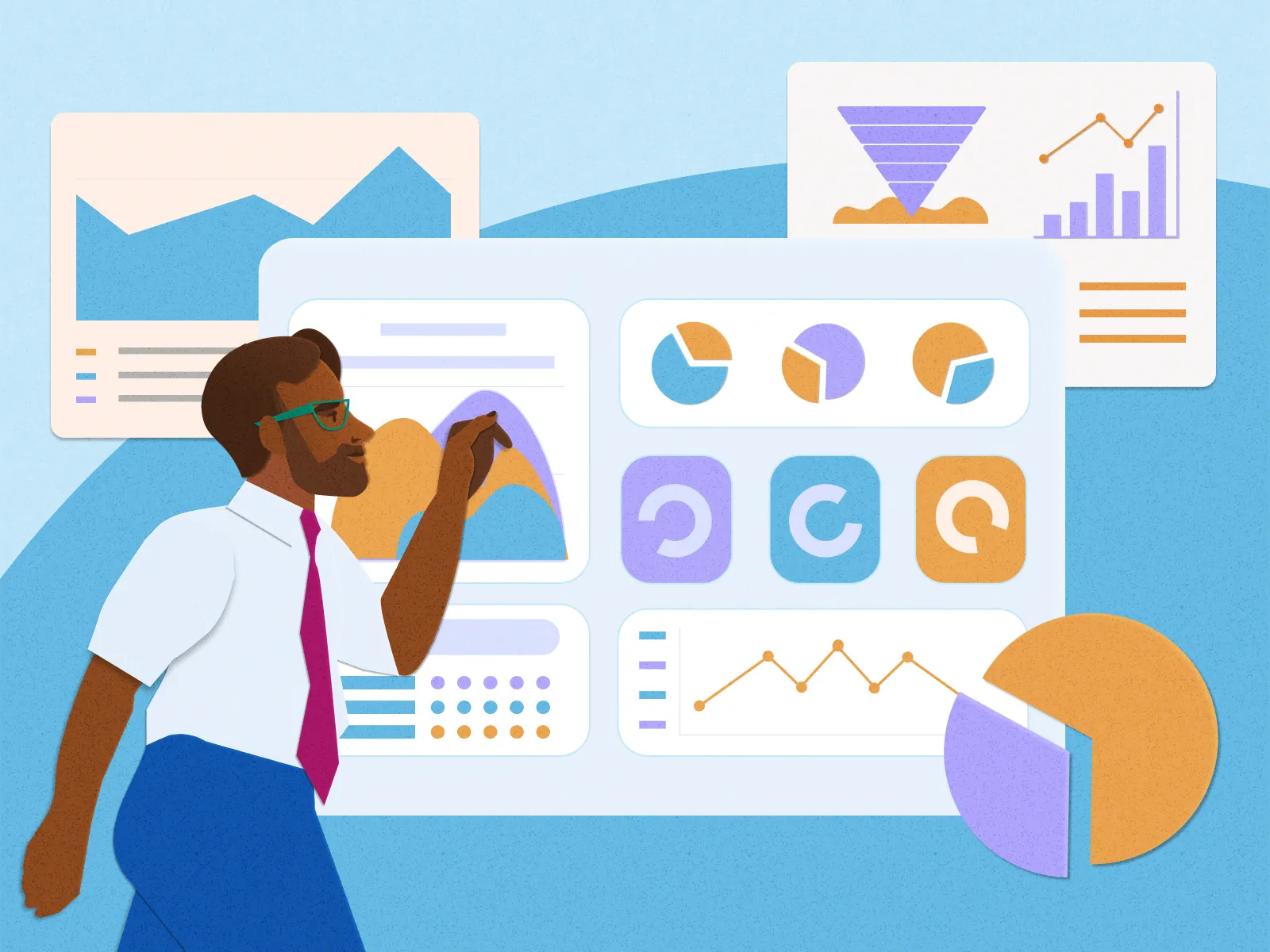
Duration: Typically less than a month
Characteristics
- Highly Productive: Focuses on quick conversions with less emphasis on extensive customization.
- Automated Processes: Utilizes online sign-ups and trials to expedite purchases.
Why it’s effective
- Lower Cost per Acquisition: Quick conversions keep marketing and sales costs down.
- Immediate Value Realization: Customers experience the benefits of the software quickly, enhancing customer satisfaction and reducing churn.
Example: A SaaS company selling email marketing tools often has a short sales cycle as the product is straightforward, and potential customers can easily understand the benefits without extensive demos or consultations.
2. Medium Cycle
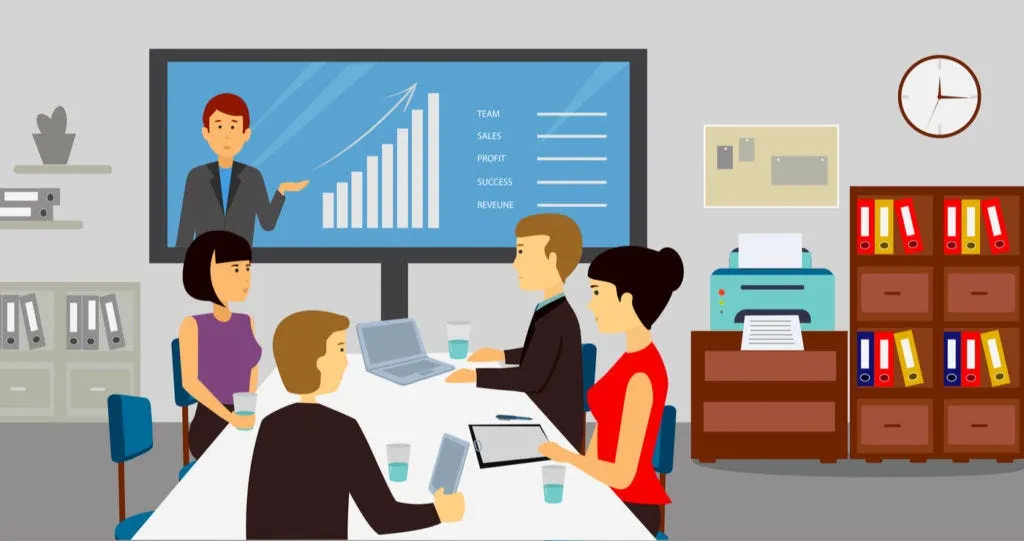
Duration: One to six months
Characteristics
- Moderate Interaction: Involves demonstrations, personalized consultations, and possibly a few rounds of negotiation.
- Customer Education: More time is spent educating the customer about the product’s value and integration capabilities.
Why it’s strategic:
- Balanced Approach: Allows for thorough qualification of leads, ensuring a good fit between customer needs and the product.
- Higher Customer Commitment: Customers tend to be more committed and have a higher lifetime value.
Example: SaaS solutions for project management or customer relationship management often fall into this category, requiring more in-depth demonstrations and discussions about customization and scalability.
3. Long Cycle
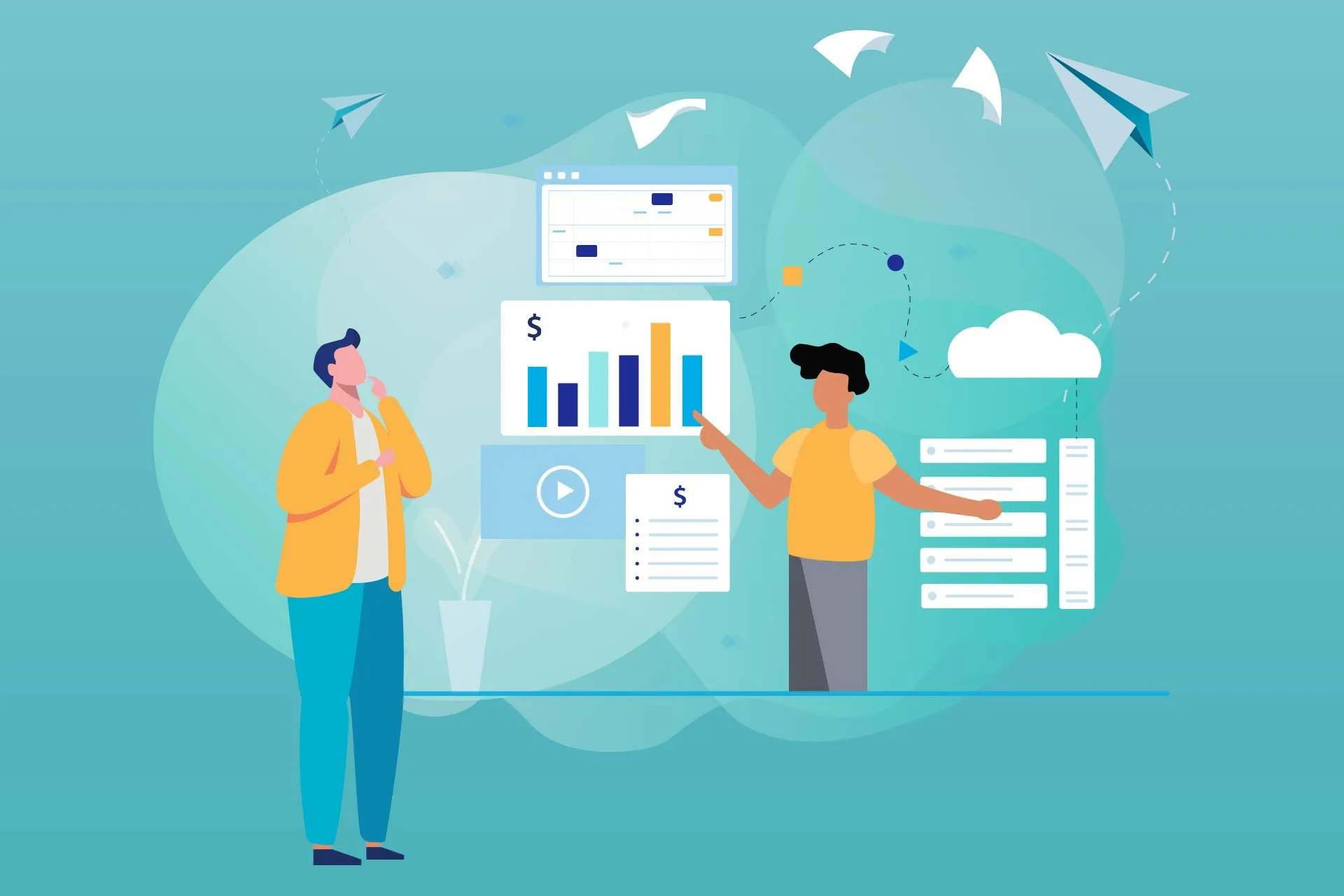
Duration: Six months to over a year
Characteristics
- Extensive Customization: Often involves significant adaptations or integrations with existing systems.
- Multiple Stakeholders: Sales involve several decision-makers and possibly cross-departmental approval.
Why it requires patience
- Higher Revenue Per Sale: Typically involves enterprise-level sales with larger contracts.
- Deep Customer Relationships: Long-term engagements allow for developing strong relationships and understanding customer needs deeply.
Example: Enterprise software that manages extensive datasets or offers comprehensive business management tools generally has a long sales cycle due to the complexity and scale of implementation.
By recognizing which length your SaaS product’s sales cycle falls into, you can better tailor your sales strategies, allocate resources more efficiently, and improve your overall sales process.
This understanding helps in setting realistic expectations both internally and for customers, ultimately leading to more successful sales outcomes.
Different SaaS sales models
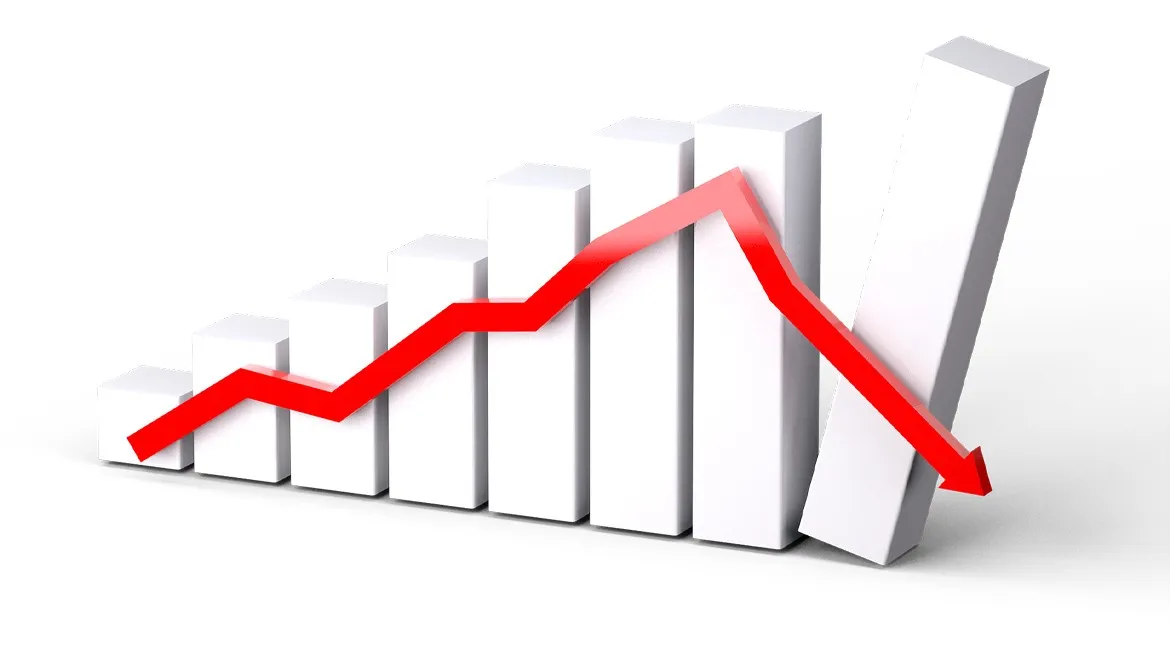
In the competitive world of Software as a Service (SaaS), adopting the right sales model is critical for maximizing market penetration and revenue growth.
Each model offers unique benefits suited to different types of customers and products.
Understanding these models can help SaaS companies strategically align their sales efforts.
1. Self-Service Model
The self-service model is designed for simplicity and efficiency, allowing customers to sign up, pay, and manage the software without any direct interaction with the sales team.
- User Autonomy: Customers appreciate the ability to trial and purchase software on their own terms, often through a simple online transaction.
- Scalability: Ideal for products with broad appeal and low to moderate complexity, this model can efficiently handle a high volume of users without a corresponding increase in sales or support staff.
- Cost-Effectiveness: With minimal sales intervention, the customer acquisition cost (CAC) is significantly lower.
- Example: Tools like Slack and Zoom offer versions that users can start using with minimal setup.
2. Transactional Sales Model
This model is suitable for SaaS companies with products that need some level of customer education but have a relatively short sales cycle.
- Direct Engagement: Involves interactions such as webinars and live demos that help to quickly convert leads into customers.
- Efficiency: Provides a good balance between personalized service and rapid sales processes, making it effective for SMBs that require some level of engagement.
- Moderate Price Points: Products are typically priced in a way that justifies personal sales efforts without needing the extensive commitment of enterprise sales.
- Example: Companies like Mailchimp use this model to cater to businesses with more specific needs than those using the self-service model.
3. Enterprise Sales Model
Targeted at large organizations, this model involves high-touch, customized sales strategies.
- Customization and Integration: Solutions are often bespoke, requiring detailed consultations, customization, and sometimes integration with existing systems.
- Long Sales Cycles: The complexity and high cost of these deals mean longer sales cycles, typically ranging from six months to over a year.
- High Customer Lifetime Value (CLV): Despite higher CAC, the return on investment is substantial due to the significant long-term contracts typical of enterprise clients.
- Example: Enterprise CRM systems like Salesforce often utilize this model, requiring extensive interaction and tailored solutions for large businesses.
4. Channel Sales Model
This model involves partnering with third parties to sell the SaaS product, expanding market reach without directly increasing the size of the sales team.
- Extended Reach: Allows SaaS companies to tap into the existing customer bases of channel partners.
- Reduced Cost: Minimizes the cost of building and maintaining a large sales force.
- Diverse Market Penetration: Effective for reaching different segments or geographical markets where direct presence is limited.
- Example: Microsoft Office 365 is often sold through various reseller partners who bundle it with other offerings for their specific markets.
5. Freemium Model
The freemium model offers a basic version of the software for free while charging for advanced features or enhanced capabilities.
- Wide Exposure: Attracts a large user base quickly, as there is no upfront cost to users.
- Conversion Opportunities: Provides numerous opportunities to convert free users to paid customers by showcasing the value of upgraded features.
- Viral Growth Potential: Free users can become brand advocates, helping to spread the product through word-of-mouth.
- Example: Evernote and Trello provide free core services with the option to upgrade for more advanced features.
6. Inside Sales Model
This model primarily involves selling software remotely via phone calls, emails, and web-based demos, without the salesperson ever meeting the customer face-to-face.
- Cost Efficiency: Reduces the overhead costs associated with physical offices and travel expenses.
- Scalability: Easily scalable as businesses can increase their number of sales reps without significant investments in infrastructure.
- Rapid Interaction: Enables quick customer service and follow-ups, which is essential for closing deals faster.
- Example: Many tech companies, especially those targeting small to medium businesses, employ this model effectively due to its lower cost and broader reach.
7. Field Sales Model
In contrast to inside the sales teams, the field sales model involves face-to-face interactions with prospects, typically for high-value deals.
- Personalized Engagement: Allows for detailed discussions and personalized sales presentations, which can be crucial for complex SaaS products.
- Building Strong Relationships: Facilitates deeper relationships with potential clients, which is often necessary for enterprise-level sales.
- Higher Conversion Rates: Though more costly, it often results in higher conversion rates for expensive and intricate products.
- Example: SaaS companies selling enterprise solutions frequently use field sales to engage directly with C-suite executives.
8. Hybrid Sales Model
A combination of inside and field sales, this model leverages the strengths of both to optimize reach and efficiency.
- Flexibility: Offers the flexibility to use the most effective sales approach depending on the complexity of the deal and customer preference.
- Cost-Effective Reach: Provides a balanced approach, maintaining cost-effectiveness while still allowing for in-person meetings when necessary.
- Adaptability: Adapts to various customer needs and market conditions, making it ideal for companies with a wide range of products.
- Example: Companies like Oracle use hybrid models to cater to different segments and deal sizes effectively.
9. Partner Sales Model
Involves collaborating with other companies to sell your product, often through resellers, affiliates, or other partnerships.
- Extended Market Reach: Expands market reach without the need to scale your own sales force.
- Leverage Established Relationships: Partners’ established customer relationships can accelerate market penetration and trust.
- Shared Resources: Reduces the burden of marketing and sales costs by leveraging partners' resources.
- Example: Microsoft has successfully expanded its global footprint by partnering with a vast network of resellers who bundle Office 365 with their offerings.
10. Usage-Based Model
Also known as a pay-as-you-go model, this approach charges customers based on their usage of the product instead of a flat fee.
- Customer-Friendly Pricing: Attracts more customers by offering a low barrier to entry and aligning costs directly with value received.
- Scalable Revenue Growth: Revenue grows as customers use the product more extensively.
- Flexibility for Users: Provides flexibility, allowing users to adjust their usage without switching packages or plans.
- Example: AWS and Google Cloud have popularized this model, attracting a wide range of users from startups to large enterprises by offering flexible, consumption-based pricing.
Each of these models has its unique advantages and can be chosen based on the specific goals, product type, and target audience of a SaaS company.
By selecting the right sales model, companies can not only enhance their sales efficiency but also better meet the needs of their diverse customer base, ensuring sustained growth and customer satisfaction.
Key SaaS Sales Metrics

Understanding key SaaS sales metrics is essential for any software as a service company aiming to measure performance, forecast growth, and refine sales strategies.
Metrics such as Monthly Recurring Revenue (MRR), Annual Recurring Revenue (ARR), and Customer Lifetime Value (CLV) provide critical insights into the financial health and long-term sustainability of SaaS businesses.
1. Monthly Recurring Revenue (MRR)
MRR is a cornerstone metric for any subscription-based business, reflecting the predictable and recurring income generated by customers each month.
- Why it matters: MRR allows SaaS companies to track consistent revenue streams and make informed decisions about investments and scaling.
- How it's calculated: Sum of all recurring revenue from customers divided by the number of months.
2. Annual Recurring Revenue (ARR)
ARR extends the concept of MRR by projecting it over an entire year, providing a broader view of expected income.
- Why it matters: ARR is essential for long-term planning and is often used by potential investors to assess a company’s viability.
- How it's calculated: Multiply MRR by 12 to get a yearly rate.
- Changes in ARR can indicate the success of new pricing strategies or the impact of customer churn over time.
- Monitoring MRR growth helps businesses understand the effectiveness of their sales and marketing efforts on a granular level.
3. Customer Lifetime Value (CLV)
CLV predicts the total revenue a business can reasonably expect from a single customer account throughout their relationship with the company.
- Why it matters: Understanding CLV helps determine how much to invest in acquiring new customers and maintaining existing ones.
- How it's calculated: Average revenue per user (ARPU) divided by customer churn rate.
- Strategic insight: A higher CLV suggests a highly effective customer retention strategy, whereas a lower CLV might indicate problems in product engagement or customer satisfaction.
4. Customer Acquisition Cost (CAC)
CAC measures the total average cost your company incurs to acquire a new customer. This includes all marketing and sales expenses.
- Why it matters: It's crucial for evaluating the efficiency of your marketing strategies and cost-effectiveness in acquiring new customers.
- Calculation: CAC is calculated by dividing all the costs spent on acquiring more customers (including advertisements, marketing team salaries, and sales team commissions) by the number of customers acquired in the period those costs were incurred.
- A good CAC depends on your LTV (Lifetime Value); however, the general rule is the lower the better, as long as the quality of leads isn't compromised.
5. Lead Conversion Rate
This metric indicates the percentage of leads that convert into paying customers and is essential for measuring the effectiveness of your sales funnel.
- Why it matters: Higher conversion rates mean your sales funnel is effective and you are targeting the right leads.
- Calculation Method: Divide the number of new customers acquired by the number of leads, then multiply by 100 to get a percentage.
- While it can vary widely, a good conversion rate is typically between 2% and 5% for SaaS companies.
6. Churn Rate
Churn rate is the percentage of your customers who cancel their subscriptions within a given time period.
- Why it matters: It’s an essential metric for assessing customer satisfaction and product relevance in the market.
- How to Calculate: Calculate churn by dividing the number of customers you lost during a specific time period by the total number of customers you had at the beginning of that period.
- Ideally, SaaS companies should aim for a churn rate of less than 5% annually.
7. Customer Retention Cost (CRC)
CRC includes all expenses that your company incurs to retain existing customers. This includes costs associated with support, success, and account management teams.
- Why it matters: Understanding these costs helps in strategizing how to improve product service and customer support efficiently.
- Method to Calculate: Add up all costs related to customer support, success initiatives, and account management, then divide by the total number of customers.
- While optimal costs can vary, effective SaaS companies often have a CRC that is a fraction of their CAC, indicating a cost-effective retention strategy.
By monitoring these metrics, SaaS companies can not only gauge current performance but also forecast future growth.
These figures help in strategic decision-making, ensuring that resources are allocated efficiently to optimize both acquisition and retention efforts.
10 Strategies to Build a Sustainable Sales SaaS Process
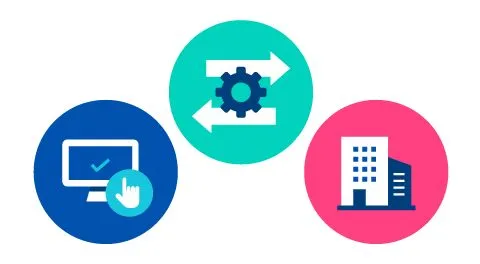
Building a sustainable SaaS sales process requires a strategic approach to ensure continuous growth and customer satisfaction. A well-defined SaaS sales strategy is crucial to address the unique challenges of SaaS sales and improve essential SaaS sales metrics.
Here are 10 foundational strategies that are essential for a longer sales cycle and developing a robust sales framework:
1. Define Ideal Customer Profiles
Understanding who your ideal customers are forms the cornerstone of effective sales and marketing strategies.
- Tailor Marketing Efforts: Clearly defined ICPs help tailor your marketing efforts to attract the most promising prospects.
- Improve Product Development: Insights from ICPs can guide product development to better meet the needs of your target market.
Example: A SaaS company specializing in project management software may define their ICP as mid-sized tech companies that are actively scaling their operations.
2. Implement a CRM System
Customer Relationship Management (CRM) systems are vital tools for managing interactions with current and potential customers.
- Centralize Customer Information: A CRM system helps in centralizing customer information, making it accessible to all sales team members.
- Enhance Customer Engagement: With detailed customer histories and preferences at their fingertips, sales teams can engage more effectively and personalize their approaches.
- Data-Driven Decisions: CRMs provide valuable data that can be analyzed to improve sales strategies and processes.
Example: Salesforce CRM is popular among SaaS businesses for its robustness and scalability, enabling companies to manage thousands of leads and customers efficiently.
3. Streamline the Sales Funnel
An efficient sales funnel is crucial for converting leads into paying customers.
- Remove Friction Points: Identify and remove friction points in the sales process to make the customer journey as smooth as possible.
- Automate Tasks: Use automation to handle repetitive tasks like email follow-ups or lead qualification, allowing the sales team to focus on closing deals.
- Monitor and Optimize: Regularly review each stage of the funnel for bottlenecks and performance issues and optimize accordingly.
Example: A B2B SaaS company found that by automating lead generation, scoring and initial outreach, they increased their conversion rates by 18%.
4. Use Data-Driven Insights
Incorporating data into your sales strategy allows for more informed decision-making and better targeting of potential customers.
- Analyze Customer Behavior: Utilize analytics to understand how customers interact with your product and sales materials. This can highlight areas for improvement and potential upsell opportunities.
- Refine Sales Tactics: By continuously analyzing performance data, you can refine your tactics to better meet the needs of your target audience.
Example: A study showed that SaaS companies that utilize data analytics for sales decisions can see up to a 30% increase in new customer acquisition.
5. Focus on Customer Education
Educating your customers about the benefits and functionalities of your product can significantly enhance customer retention and satisfaction.
- Develop Comprehensive Resources: Create tutorials, webinars, and detailed guides that help customers understand and utilize your product more effectively.
- Establish Thought Leadership: Regularly publish insightful content that addresses common industry challenges and best practices, positioning your brand as a leader.
- Impact on Retention: Educated customers are more likely to appreciate the full value of your software, reducing churn rates by as much as 15%.
6. Optimize Pricing Strategies
Effective pricing strategies are critical for attracting and retaining customers while maximizing revenue.
- Conduct Market Research: Understand what your competitors are charging and what your target market expects to pay.
- Tiered Pricing Models: Implement tiered pricing strategies that cater to different segments of your market, allowing customers to choose a plan that best fits their needs.
- Dynamic Adjustments: Continuously monitor the effectiveness of your pricing and adjust based on customer feedback and market conditions.
Example: By adjusting their entry-level pricing down by 10% and enhancing features in higher-tier plans, one SaaS company reported a 20% increase in conversion rates and a 10% increase in upsells within six months.
7. Enhance Customer Success Initiatives
Customer success is foundational to retaining clients and reducing churn in the SaaS industry.
- Implement Proactive Support: Shift from reactive customer service to proactive customer success. This involves regularly reaching out to customers with tips on using your product more effectively.
- Measure Success Metrics: Track metrics like net promoter score (NPS) and customer satisfaction (CSAT) to gauge the effectiveness of your customer success initiatives.
Example: Companies that excel in customer success can see retention rates improve by up to 15%, according to industry studies.
8. Develop a Strong Sales Team
A well-trained, motivated sales team is crucial saas sales team) for achieving and surpassing sales targets.
- Continuous Training: Provide ongoing training that includes product updates, advanced sales techniques, and competitor analysis.
- Cultivate a Positive Culture: Foster a sales culture that rewards creativity, persistence, and customer-centric strategies.
Example: Salesforce reports that continuous sales training can boost performance by up to 20%.
9. Leverage Marketing Automation
Utilizing marketing automation tools can increase efficiency and effectiveness in reaching potential customers.
- Streamline Lead Nurturing: Use automation tools to send timely, relevant content to leads based on their behavior and engagement.
- Enhance Lead Scoring: Automatically score leads to prioritize those most likely to convert, ensuring your sales team focuses their efforts effectively.
Example: Automation can increase your sales rep productivity by 14.5% and reduce marketing overhead by 12.2%.
10. Regularly Review and Adapt
The SaaS market is dynamic, requiring regular adjustments to your sales strategy.
- Conduct Quarterly Reviews: Regularly assess the performance of all aspects of your sales process and make adjustments based on findings.
- Stay Ahead of Market Changes: Keep abreast of industry trends and technological advancements to ensure your sales strategies remain relevant.
Example: Companies that routinely adapt their sales strategies can see a 10% higher lead acceptance rate and a 20% increase in sales opportunities.
By implementing these strategies, SaaS companies can build a sales process that not only drives short-term gains but also establishes a foundation for long-term success, ensuring that they remain competitive in an ever-evolving market.
Challenges of SaaS Selling
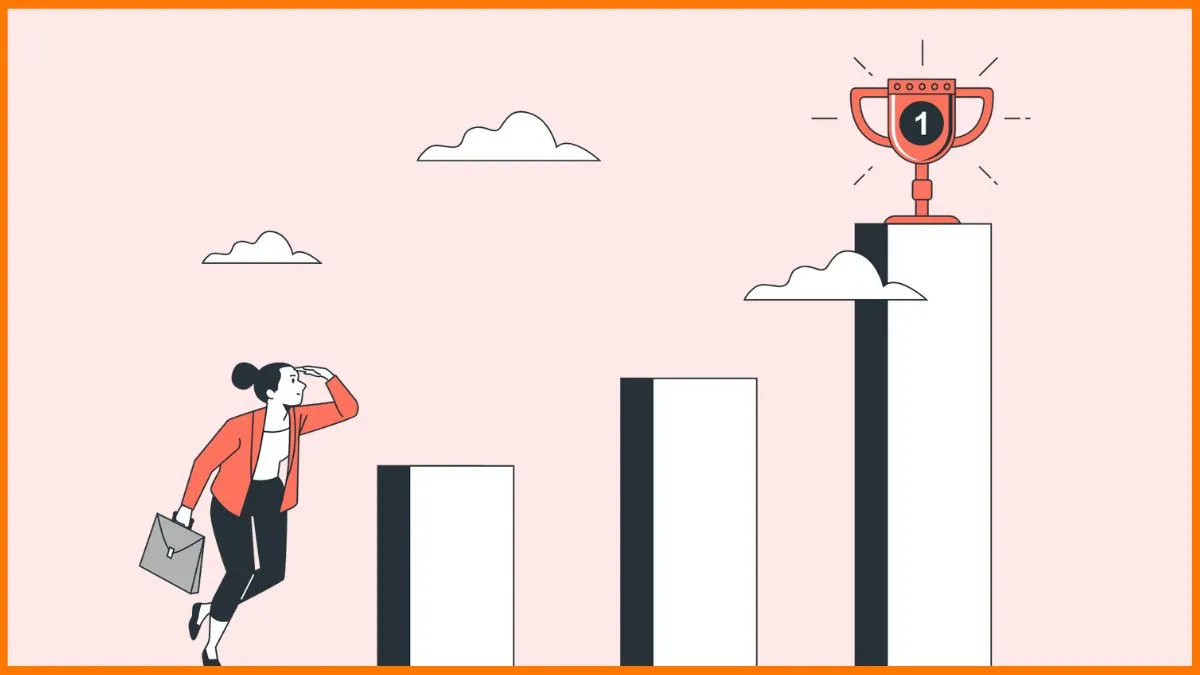
Selling SaaS (Software as a Service) products presents unique challenges that can significantly impact a company’s growth and sustainability.
Understanding these challenges is crucial for developing effective strategies to overcome them.
High Customer Acquisition Costs
The cost of acquiring new and existing customers in the SaaS industry can be prohibitively high, influenced by intense competition and the need for extensive marketing efforts.
- The average customer acquisition cost for SaaS companies can range between $100 to over $400, depending on the market and product complexity.
- Marketing and Sales Spend: A significant portion of the budget is often allocated to digital marketing and sales teams, necessary to reach potential customers in a crowded market.
- Efficiency Is Key: Optimizing the sales funnel and improving conversion rates are essential to reduce CAC.
Long Sales Cycles
SaaS products, especially those targeted at enterprises or specialized industries, often face lengthy sales cycles.
- Long sales cycles can strain resources and delay revenue, with some cycles extending beyond 6-12 months, particularly in the enterprise segment.
- Complex Decision-Making: Purchases require approval across several levels of a business, extending the sales process.
- Tailored Demonstrations: Each potential client may require customized demos and detailed presentations, further lengthening the cycle.
Customer Retention
Maintaining customer loyalty in a competitive SaaS environment is challenging but critical for sustainable growth.
- A 5% increase in customer retention can increase company revenue by 25% to 95%, underscoring its importance.
- Ongoing Support and Updates: Continuous innovation and responsive customer service are required to retain clients.
- Customer Success Initiatives: Implementing proactive customer success strategies helps increase retention rates.
Market Competition
The SaaS market is highly competitive, with numerous providers offering similar services.
- Differentiation is Crucial: Standing out in a crowded market is essential. Focus on unique features, exceptional customer service, or niche market targeting.
- Aggressive Marketing Strategies: Invest in SEO, content marketing, and targeted ads to increase visibility.
- For example, Salesforce continues to lead in CRM due to its constant innovation and comprehensive marketing strategies.
Product Differentiation
Distinctively positioning your product is vital in a saturated market.
- Highlight Unique Features: Emphasize aspects of your product that are unique or superior to competitors.
- Customer Testimonials and Case Studies: Use these tools to showcase how your product has successfully addressed specific business needs.
- Products that demonstrate clear differentiation can see a 10-15% increase in customer preference.
Scalability Issues
Scalability is a double-edged sword in SaaS; rapid growth must be manageable.
- Infrastructure Readiness: Ensure your IT infrastructure can handle increased demand without performance dips.
- Flexible Resource Allocation: Use cloud services that allow scaling resources up or down based on current needs.
- Impact: Companies that effectively manage scalability can grow 20% faster than those that don't.
Churn Management
Reducing customer churn is imperative for maintaining revenue and profitability.
- Regular Feedback Loops: Engage with customers regularly to identify and address dissatisfaction early.
- Enhanced Customer Support: Offer comprehensive support and training resources.
- Reducing churn by 5% can increase profitability by 25% to 125% depending on the industry.
Integration Complexities
SaaS products often need to integrate smoothly with existing customer systems.
- Robust API Offerings: Develop and maintain well-documented APIs that facilitate easy integration.
- Pre-built Integrations: Offer ready-made solutions for popular software to decrease customer workload.
- Example: Slack’s success is partly due to its extensive integration capabilities with over 2,000 third-party applications.
Data Security Concerns
In the digital age, data security is a top priority for customers.
- Implement Advanced Security Measures: Utilize encryption, regular security audits, and compliance with standards like GDPR.
- Transparent Communication: Regularly inform customers about your security practices and any updates.
- 60% of customers say they would likely switch brands if they experienced a data breach, highlighting the importance of security.
Pricing Strategy
The right pricing strategy can significantly influence the buying decision.
- Competitive Analysis: Regularly analyze competitor pricing to ensure your offerings remain attractive.
- Value-Based Pricing: Price products based on the value they provide to customers, which can be more effective than cost-plus pricing.
- Flexible pricing models, such as tiered or usage-based pricing, can cater to a wider range of customers.
Conclusion
Successfully navigating the SaaS sales landscape requires addressing several critical challenges, from fierce market competition and the need for clear product differentiation to managing scalability and integration complexities.
Effective strategies to mitigate churn and ensure robust data security are equally vital. Companies must also refine their pricing strategies to adapt to customer expectations and market conditions.
By prioritizing these areas and continuously adapting to changes, SaaS companies can strengthen their market position, enhance customer satisfaction, and drive sustainable growth.
Adopting these practices will help any SaaS organization thrive in an increasingly competitive environment.





.webp)


